Fueling your Car
Solid-State Batteries for EVs

The flourish of new electric vehicles (EVs) and hybrids on the auto markets hint towards the diminishing of fossil fuel use. EV sales have a long, long way to go before outselling vehicles with internal combustion engines (ICEs), but the goals have been set by international emission standard agreements. Certainly, doing away with EV range anxiety, the liquid lithium-ion batteries proneness to catching fire, having EVs with brief recharging times that are in line with current ICE refuelling times, and have pricing parity between a new EV and an equivalent new ICE vehicle would make a world of difference in the minds of people on the lookout for a new car. Once these EV problems have been solved, perhaps consumers will genuinely buy into an all-EV future.
The good news for EV enthusiasts is that essentially every big automotive manufacturer in the world has unveiled its fleet’s electrification plans and zero-emission target dates. Some manufacturers have even gone further, declaring that gasoline and diesel engines would no longer be available in their model line-ups by 2050. And, in order for these claims to become reality, some big landmark advancements in the EV future are being made right now, with huge money currently being pumped into various manufacturer’s kitties to research and create the perfect solid-state battery – especially designed for use in EVs.
One automotive manufacturer with a big sway in what goes down in the automotive world is Toyota, and they have pumped billions into creating a solid-state battery for use in their future hybrid vehicles and EVs. A version of Toyota’s LQ Concept, which first debuted at the 2019 Tokyo Motor Show, is now using working solid-state batteries, and has been doing so since June 2020. Toyota has been collecting all the performance data from the solid state batteries in the LQ for research, development, and better solid-state battery designs. The LQ Concept car is unlikely to end up as a production vehicle, however the solid-state batteries inside the car, and their development, will be used as a blueprint in Toyota’s new hybrid vehicles and EVs soon to make an appearance on the market for buyers to purchase.
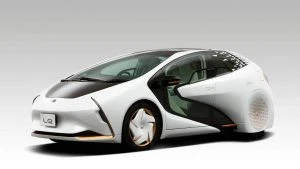
Toyota LQ Concept Solid-State
Toyota’s quick development of solid-state batteries for use in all their hybrid and electric vehicles by 2030 is a sign of the ramping up in EV production that is happening not only at Toyota but in all other big global automotive brands who are boosting investments in the anticipation of greater EV and hybrid vehicle consumerism.
What battery type does Tesla use? Currently, Tesla has been using heavy liquid lithium-ion battery technology. However solid-state batteries are really the next step in clever battery technology, especially for EVs. Why? Solid-state batteries offer much better energy density, which leads to smaller, lighter batteries for cars but with a vastly improved range before recharging is necessary. Solid-state batteries will also be able to recharge from empty (flat) to 80 % in just 15 min – not anywhere between 2 to 10 hours that is currently the norm, if you can find a spare fast charger to park up at.
The good news for solid-state batteries doesn’t stop here either, because solid-state batteries are inherently safer due to the lack of flammable liquid electrolytes that you’ll find in liquid lithium-ion batteries. You may have heard of various electronic devices bursting into flame? Well, liquid lithium-ion batteries bursting into flame and causing fires in various EVs over the last couple of decades has been an issue. This in itself has deterred many people away from buying into EVs altogether.
So, big dollars are being spent in the design of solid electrolyte batteries (solid-state batteries) that are stable, chemically inert, and still a good conductor of ions between the electrodes. In essence solid-state batteries will be doing away with the slopping, flammable liquid lithium-ion electrolyte battery designs.
By default, solid-state batteries are more stable, but they are also more compact in design, and therefore lighter. Solid state batteries thus pack more energy output into the same amount of storage space that heavier and lower-output liquid lithium-ion batteries require. Because solid-state batteries are lighter, they have more energy density, offer more range, and deliver a better power to weight ratio, and they also recharge faster.
Solid-state batteries have been used in small electronic devices like pacemakers (an amazing bit of life-changing tech) as well as radio frequency identification (RFID), and wearable devices for years. Having fewer bits and pieces involved in the solid-state battery design means fewer things are present to go wrong. In addition to their improved safety, size, and stability, solid-state batteries in EVs would also offer faster charging times, more travel range, and even greater energy density.
Solid electrolytes in solid-state batteries can even be composed from a number of everyday materials – even ceramics and glass. The challenge to making solid-state batteries viable, however, is developing the technology that is commonly used in small devices and applying it to large-scale applications like in an EV. Currently, solid state batteries are expensive to fabricate because they have been prone to cracking, which has been a result of the brittleness of the electrolytes inside the battery expanding and contracting during continual use. The new research and development is setting out to change this.
Toyota is cracking the problem and will be using their solid-state batteries in their new range of hybrid vehicles first, which is an ideal testing ground for their fully-kitted EVs soon. Volkswagen is also promising that they will have solid-state batteries in use and in their cars by 2024. Like Toyota and Volkswagen, BMW anticipates that solid-state batteries could make it into production cars by 2025. Tech giants Samsung and Panasonic are working away at creating a range of solid state batteries that automakers will be able to use. Toyota has partnered with Panasonic to pave the way to an EV future.
Fuel Prices: New Car?
It’s unfortunate to see that the prices for fuel in Australia have been on the steady increase across. Retailers suggest that the increase in the cost of fuel has come about through record oil prices and new logistical challenges for acquiring the fuel. It’s definitely worth shopping around to ensure that you can get the best price on your fuel at the pump, as prices do differ from retail outlet around town and across States.
Just recently, regular unleaded petrol (91) had a national average of $2.14 per litre, yet the cheapest was found in Carnarvon, Western Australia, where it was sold for $1.59 per litre. The most expensive was located in Derby, Western Australia, where (91) was seen being sold for $2.42 per litre. The same trend is occuring for (95), (98), (E10), and Diesel.
As for how long these high fuel prices will continue to last, fuel industry analysts say that it’s anyone’s speculation at the moment. Peter Khoury, NRMA spokesman, recently said: “These prices are completely off the scale, more than twice what [motorists] were paying in April 2020… We have no idea where we would set the ceiling at this point.”
It begs the question: Should a motorist that has to do quite a few kilometres each week look at purchasing a more fuel efficient car? The answer, I guess, is up to you. It depends on how tight your budget is. If you can afford a new car, or at least a second car that’s extra-miserly on fuel, then I’d say go for it – particularly if you’re having to do high mileages. Then again, if you are not travelling far each week, say to the shops and the occasional trip elsewhere, then staying with the car you have and keeping your travel to a minimum is probably the way to go at this stage, and we’ll sit tight and see where/when all this price rising will come to an end, revising it again in another few months.
You might be a motorist who needs to upgrade for various reasons including the rising fuel costs. In this case, being in the market for a new car and wanting to purchase a vehicle that delivers the best fuel-efficiency has to be a pivotal point of purchase for you. Here is a list of the most fuel-efficient vehicles in 2022 across numerous categories, something that you might find useful right now.
Note – Where “Diesel” hasn’t been mentioned after the model, assume that it’s “Petrol” version…
Small cars (Hatchbacks):
Toyota Yaris Hybrid Hatchback 3.3 litres/100 km
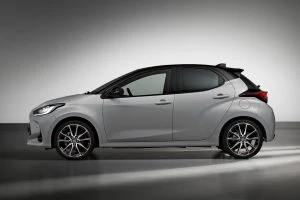
Toyota Yaris Hybrid Hatchback
Toyota Corolla Hybrid Hatchback 4.2 litres/100 km
Toyota Yaris Hatchback 4.9 litres/100 km
Mazda 2 Hatchback 5.3 litres/100 km
Toyota Corolla Hatchback 6.0 litres/100 km
Mazda 3 Hatchback 6.2 litres/100 km
MG3 Hatchback 6.7 litres/100 km
Hyundai i30 Hatchback 7.4 litres/100 km
Family & fleet (Sedans):
Toyota Camry Hybrid Sedan 4.7 litres/100 km
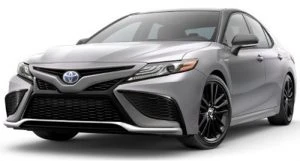
Toyota Camry Hybrid Sedan
Toyota Camry Sedan 6.8 litres/100 km
Small-Med SUV
Toyota RAV4 Hybrid 2WD 4.7 litres/100 km
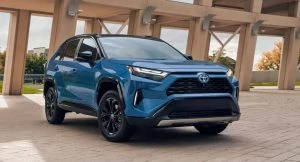
Toyota RAV4 Hybrid
Toyota RAV4 Hybrid AWD 4.8 litres/100 km
Mazda CX-3 2WD 6.3 litres/100 km
Mazda CX-30 2WD 6.5 litres/100 km
Toyota RAV4 2WD 6.5 litres/100 km
Mazda CX-5 2WD 6.9 litres/100 km
Toyota RAV4 AWD 7.3 litres/100 km
Mazda CX-5 AWD 7.4 litres/100 km
Mitsubishi Outlander 2WD 7.5 litres/100 km
Mitsubishi Outlander AWD 8.1 litres/100 km
Large SUV
Toyota Kluger Hybrid AWD 4.7 litres/100 km

Toyota Kluger Hybrid AWD
Hyundai Santa Fe AWD Diesel 6.1 litres/100 km
Kia Sorento AWD Diesel 6.1 litres/100 km
Toyota Prado 4WD Diesel 7.9 litres/100 km
Mazda CX-9 2WD 8.4 litres/100 km
Toyota Kluger 2WD 8.7 litres/100 km
Toyota Kluger AWD 8.9 litres/100 km
Toyota LandCruiser 300 Diesel 8.9 litres/100 km
Mazda CX-9 AWD 9 litres/100 km
Kia Sorento 2WD 9.7 litres/100 km
Hyundai Santa Fe 2WD 10.5 litres/100 km
Nissan Patrol Y62 14.4 litres/100 km
Ute
Nissan Navara STX 4WD Diesel 7.8 litres/100 km

Nissan Navara STX 4WD Diesel
Toyota HiLux SR5 4WD Diesel 8 litres/100 km
Ford Ranger XLT 4WD Diesel 8 litres/100 km
Isuzu D-Max XT 4WD Diesel 8 litres/100 km
Mazda BT-50 SP 4WD Diesel 8 litres/100 km
Mitsubishi Triton GLX+ 4WD Diesel 8.6 litres/100 km
Ford Ranger XLT 4WD Diesel 8.9 litres/100 km
LDV T60 Max 4WD 2.0L Diesel 9.2 litres/100 km
GWM Ute 4WD 2.0L Diesel 9.4 litres/100 km
Toyota HiLux Workmate 2WD 10.9 litres/100 km
Ram 1500 DS Limited 12.2 litres/100 km
Ram 1500 DT Express 12.2 litres/100 km
Chevrolet 1500 LTZ 12.8 litres/100 km
Van
Hyundai Staria Load van Diesel 7 litres/100 km
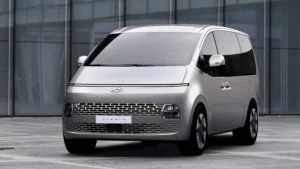
Hyundai Staria Load van Diesel
Ford Transit Custom van Diesel 7.3 litres/100 km
Toyota Hiace LWB van Diesel 8.2 litres/100 km
LDV G10 van Diesel 8.2 litres/100 km
LDV G10 van 11.1 litres/100 km
Toyota’s Hybrid vehicles, if they suit you needs, top their classes with fuel bills that were roughly half their nearest rivals. The Hybrid versions of the Toyota Yaris Hatch, the Toyota Corolla Hatch, the Toyota Camry Sedan, the Toyota RAV4 SUV, and the Toyota Kluger are the ones I’m talking about here.
Hydrogen V8 ICE

Exciting news for internal combustion engine (ICE) lovers: Toyota, Mazda, Subaru and Kawasaki are wanting to collaborate on the attempt to keep the combustion engine alive while meeting all the global clean air targets. Not only that, but Toyota and long-time Japanese engineering partner Yamaha are at work developing a special new hydrogen-powered 5.0-litre V8 engine. Unlike a hydrogen fuel-cell car, which combines hydrogen and oxygen atoms to create electricity to drive a motor, this new hydrogen V8 internal combustion engine is a conventional piston-driven engine that has been tuned to burn hydrogen instead of petrol.
While this newly developed V8 engine isn’t completely new, the way it’s fuelled is. It’s a 5.0-litre naturally aspirated V8 that is based off the engine that has been used in the Lexus RC F coupe. Yamaha says that it produces around 335 kW of power at 6800 rpm and 540 Nm of torque at 3600 rpm. Having modified the injectors, the head, the intake manifolds and other engine components, this work has added up to make the engine environmentally friendly. The hydrogen-fed ICE has become less powerful than the petrol-fed V8 that the hydrogen engine is based on. In the Lexus RC F coupe, the petrol V8 puts out 472 kW and 536 Nm of torque, so while torque has increased a little, power has dropped considerably. That said, 331 kW is still a stonking amount of power to enjoy, and more often than not it is the torque that you really want in the real world conditions. You also still get the sound of a burbling V8, and what’s not to like about that!
Yamaha engineer, Takeshi Yamada, said that the engine has a different character to a conventional petrol motor. He stated that hydrogen engines provide a friendlier feel, making them easier to use even without having utilize other electronic aids for the drive.
Toyota is clearly committed to the project of providing ICE powerplants that use hydrogen as the fuel. Given that Toyota has run a hydrogen-powered Toyota Corolla in Japan’s Super Taikyu race series as well as showcasing a hydrogen-powered Toyota Yaris GR prototype with the same hydrogen engine technology, it is obvious that they want to continue with this new breed of ICE.
One of the beauties about burning hydrogen instead of petrol is that the hydrogen powerplant does not produce carbon dioxide, which is considered to be one of the primary contributors to global warming. There would also be no significant nitrogen oxides emissions from an ICE designed to burn hydrogen, thanks to the selective catalytic reduction technology used in the aftertreatment of the combustion gases.
“Hydrogen engines house the potential to be carbon-neutral while keeping our passion for the internal combustion engine alive at the same time,” Yamaha Motor president Yoshihiro Hidaka said. He also added that: “I started to see that engines using only hydrogen for fuel actually had very fun, easy-to-use performance characteristics”.
While hydrogen is plentiful in the universe, it must be separated from other compounds to be used as fuel. Up to the year 2020, most hydrogen was produced from fossil fuels, resulting in CO2 emissions. Hydrogen obtained from fossil fuels is often referred to as grey hydrogen, when emissions are released into the atmosphere. Blue hydrogen is the hydrogen produced from fossil fuels when emissions are captured through carbon capture and storage (CCS).
Hydrogen that is produced from fossil fuels using the newer non-polluting technology called methane pyrolysis is often called turquoise hydrogen.
You can also generate hydrogen from renewable energy sources, and this hydrogen is often referred to as green hydrogen. There are two practical ways of producing green hydrogen. One of the ways is to use electric power for producing hydrogen from the electrolysis of water. The other way of producing green hydrogen is to use landfill gas to produce the green hydrogen in a steam reformer. Hydrogen fuel, when it is produced by using renewable sources of energy like wind or solar power, is a renewable fuel.
Hydrogen can also be created from another renewable energy source called nuclear energy via electrolysis, and this is sometimes seen as a subset of green hydrogen, but it can also be referred to as being pink hydrogen.
Obviously, when a car can be designed to run on hydrogen that has been produced from renewable energy sources, then this is a good thing. Toyota and Yamaha remain adamant that this is great technology which could carve out a niche for itself in the new EV automotive landscape.
Toyota has also recently revealed a fleet of 12 zero tailpipe-emission concept vehicles, many of which will reach production in the coming years.
This is all good news stuff, especially for those of us who love the sound of an ICE instead of a silent EV. The noisy farts always get the best round of laughter!
An FCEV for Our Environment

With the rising concerns over greenhouse gas emissions, the development of ammonia fuelled vehicles as environmentally friendly cars would have to look rather promising. A car running on NH3 – now what’s not to like about that?
Many scientists believe that it is urgent to reduce CO2 emissions because of the global warming effect that the gas has on the climate around the globe. Despite CO2 in the atmosphere being great for plant growth (some of the edges of the earth’s deserts are greening up again with increased CO2 in the atmosphere), and the earth’s water cycle playing a pivotal role in governing the earth’s temperature, the drive to create taxing emission standards and expensive alternatives continues to drive government policy worldwide. What if we gradually changed over to another source of energy so that everyone in the world could afford the switch, allowing people to maintain a higher standard of living?
Using CO2–free fuels to reduce the level of CO2 emissions could be a viable option in the current climate. So, what about ammonia?
An internal combustion engine (ICE) burns a fuel. Basically, you can convert an engine to run on any fuel such as fossil-fuels, hydrogen and ammonia, and there are many ways to do so. ICE engines are very good in combination with battery and hybrid systems. It would be a perfect solution to make a hydrogen-fuelled vehicle with hydrogen that has been cracked out of ammonia and stored in the vehicle. The ammonia would then be used to drive the electric propulsion system because an electric propulsion system is highly efficient. That would be a perfect vehicle.
The battery system in this model would not need to be anywhere near the size of a pure EV and anywhere near the weight. For instance, in a Tesla, the whole EV platform under the car is a battery pack that is massively heavy. A clean-burning ICE producing heat-waste from the combustion process could use this heat-waste to warm up the cabin’s interior on a cold day, cool the cabin down via a heat exchanger, and could also be used to cool and heat the battery accordingly for optimum battery operating temperatures.
You can store accessible hydrogen in the form of ammonia (NH3). Unlike hydrogen gas, which requires very low (cryogenic) temperatures to liquefy, ammonia becomes a liquid at –34°C. Ammonia also does so at room temperature and at 9 atmospheric pressures, making it much more convenient to use as a transportation fuel. Ammonia is comparatively inexpensive to produce, and the hydrogen can be separated out using catalysts without undue losses.
Essentially, you have a car with a combustion engine that is burning the hydrogen that is cracked out of the stored ammonia onboard the car to produce electricity. The engine would have an alternator as an electric motor that would power the drivetrain with electricity at close to 99% efficiency. This set-up is known as a Fuel Cell Electric Vehicle (FCEV).
The FCEV above uses stored ammonia that’s cracked onboard the car to produce hydrogen to run the electric drive train – only emitting water vapour and warm air as exhaust, and is considered a zero-emission vehicle. Now that sounds pretty smart, efficient and green to me!